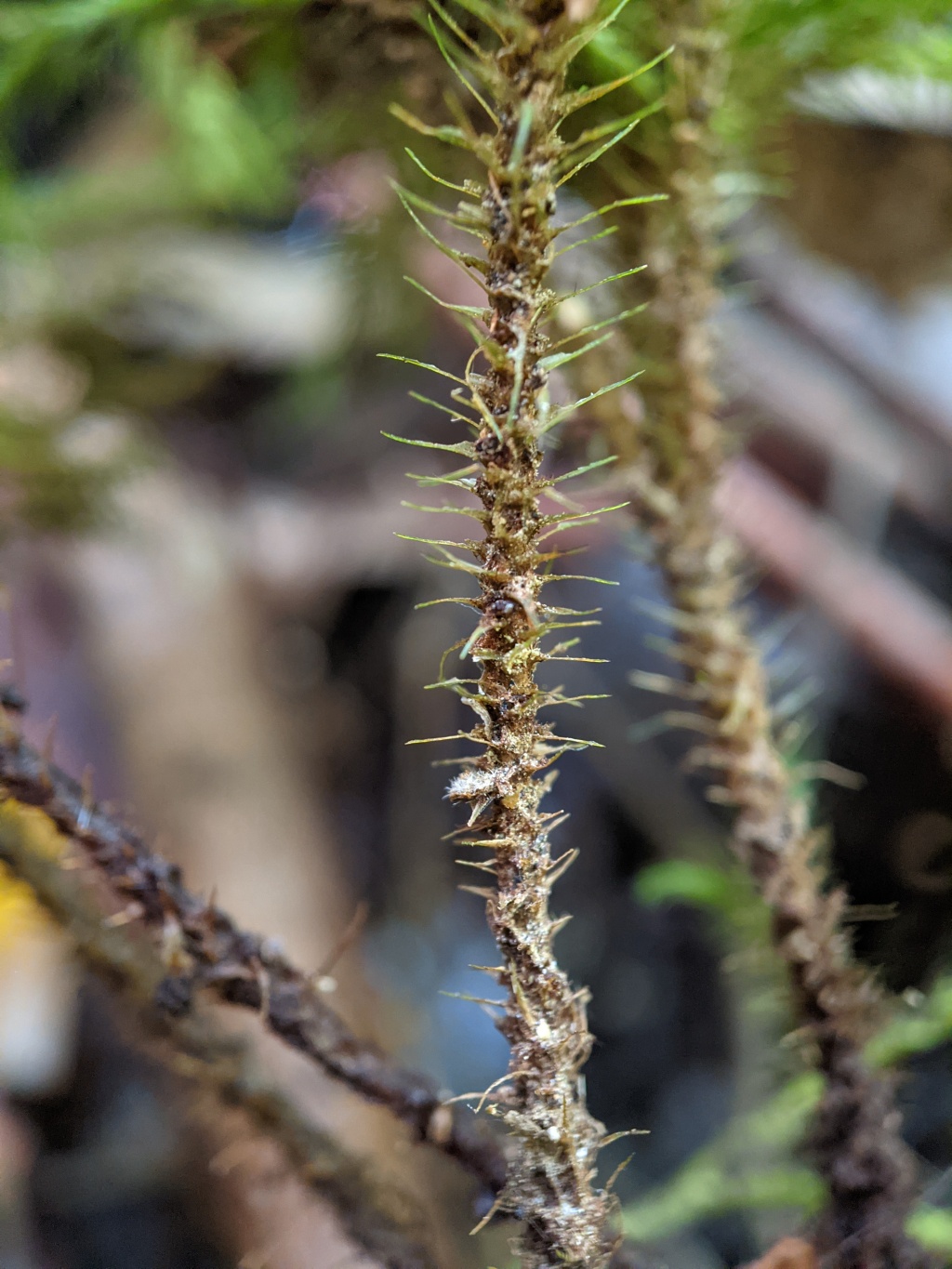Mniodendron comosum
(Labill.) Lindb. ex ParisLoose tufts on soil, logs and rocks, usually dark green, somewhat glossy. Stipes erect, to 9 cm long, entirely covered with tomentum, with small spreading pseudoparaphyllia. Fronds palmate, umbellate or pinnate, to 5 cm wide, with simple to sparingly pinnate branches. Stipe leaves widely spreading to squarrose-recurved, triangular-ovate to triangular-lanceolate, 3.5–5.1 mm long, 1.2–1.8 mm wide, plicate to striate, concave at base; bases auriculate to cordate; apices gradually acuminate; costae excurrent as a smooth to finely serrate hairpoint; margins often serrate near apices, otherwise entire, plane, bistratose in places, usually with a border of shorter cells; cells linear, 30–120 μm long, 3–6 μm wide, smooth; alar cells irregular, rectangular or quadrate, forming a small group in auricles. Branch leaves erecto-spreading to falcate-secund, striate when dry, subulate from a narrowly triangular-ovate base, (3.4–) 3.9–5.3 (–6.5) mm long, 0.8–1 (–1.25) mm wide, concave; bases rounded to cordate; apices gradually long-acuminate; costae excurrent with a serrate hairpoint; margins serrate toward apices, recurved near base, usually bistratose in places, with a border of shorter, darker cells; laminal cells linear, 25–75 μm long, 3–5 μm wide, smooth; alar cells somewhat inflated, rectangular, often orange, forming a rectangular group following margins in auricles. Setae (1.5–) 2–4 cm long, orange to dark red or dark reddish brown, smooth. Capsules horizontal to pendent, obconic to cylindric, deeply sulcate, weakly to strongly curved, 3.5–5.5 mm long. Opercula sharply rostrate from conic base, 2–3 mm long.
HSF, MonT, HFE, VAlp. New Zealand and Auckland and Campbell Islands. Also NSW and Tas. In rainforest or montane forest near creeks in the Yarra Ranges through to the west slope of the Baw Baw Plateau, Wilsons Promontory and in East Gippsland on the Errinundra Plateau and in Genoa River Gorge.
Small and compact plants and taller and usually loosely branched plants have been recognised as separate varieties (i.e var. comosum and var. sieberi (Müll.Hal.) N.E.Bell, A.E.Newton & D.Quandt respectively) or even species (Touw 2012). The later form is prevalent in Victoria, however, these forms intergrade (Touw 1971) and are not recognised at any taxonomic rank here.
 Spinning
SpinningSynonyms
Touw, A. (1971). A taxonomic revision of the Hypnodendraceae (Musci). Blumea 19: 211–354.
Touw, A. (2012). Australian Mosses Online. 22. Hypnodendraceae: Mniodendron. http://www.anbg.gov.au/abrs/Mosses_online/Hypnodendraceae_Mniodendron.pdf.

